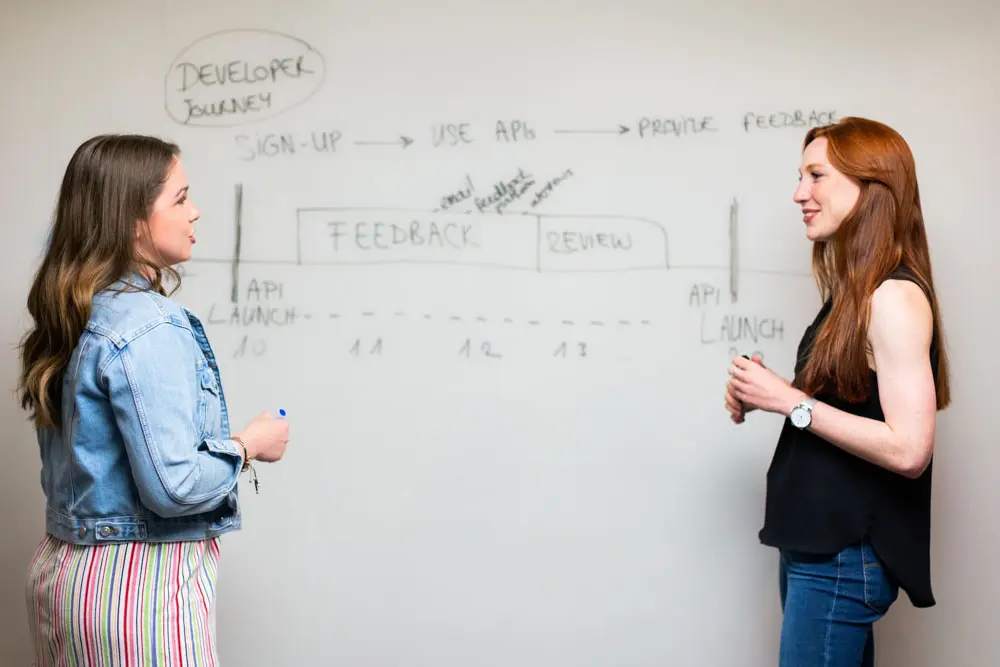How to Create User-Friendly Websites
User-centered design (UCD) is an approach that prioritizes the needs, preferences, and goals of users when designing a product or service. In the context of web design, this means creating websites that are intuitive, efficient, and enjoyable to use. To help you design and develop a user-friendly website, here are 10 essential principles of user-centered design.
- Know Your Users: Understand the needs and preferences of your target audience by conducting user research. This will help you create a website tailored to their specific requirements, leading to a satisfying and effective user experience.
- Consistency Matters: Maintain consistency in design elements, such as colors, fonts, and button styles, to create a cohesive user experience. Consistency helps users navigate your website more easily and builds trust in your brand.
- Clear Navigation: Design your website with a clear and intuitive navigation structure, making it easy for users to find the information they’re seeking. Use descriptive labels, logical organization, and breadcrumbs to guide users through your site.
- Make it Responsive: Implement a responsive web design to ensure your website looks and functions well on various devices, such as smartphones, tablets, and desktop computers. This will cater to the diverse needs of users and create a seamless browsing experience.
- Prioritize Readability: Choose fonts, colors, and formatting that promote readability. Opt for simple, clean typography and ensure there’s sufficient contrast between text and background to make your content easy to read.
- Feedback and Communication: Provide users with feedback and clear communication through visual cues, progress indicators, and confirmation messages. This helps users understand the results of their actions and feel more confident while interacting with your website.
- Optimize Load Times: Ensure your website loads quickly by optimizing images, using efficient coding, and leveraging browser caching. Fast load times contribute to a positive user experience and can improve search engine rankings.
- Accessibility for All: Design your website with accessibility in mind, making it usable for people with disabilities. Follow the Web Content Accessibility Guidelines (WCAG) and consider features like keyboard navigation, alternative text for images, and screen reader compatibility.
- Minimize User Effort: Design your website to minimize the effort users must exert to accomplish their goals. Implement features like autocomplete, smart defaults, and simplified forms to streamline user interactions and improve efficiency.
- Test, Iterate, and Improve: Embrace an iterative design process by continuously testing your website with users, gathering feedback, and making improvements. This will help you refine your design, address any issues, and ensure your website meets the needs and expectations of your users.
In the realm of user-centered design, empathizing with user scenarios is crucial. A deep understanding of the various contexts in which users might interact with your website, including their environments, mental states, and objectives, is essential. This empathetic approach ensures that the design caters to both general needs and specific scenarios, thereby enhancing the overall user experience.
Simplicity should be a cornerstone of your design philosophy. A clean, uncluttered layout with ample white space aids in focusing the user’s attention on what’s important, making the website more navigable. Simplifying complex processes into smaller, more manageable steps and avoiding unnecessary elements enriches the user experience by preventing feelings of overwhelm.
The importance of intuitive interactions cannot be overstated. Users should find interactions with your website predictable and easy to understand. This encompasses intuitive placement of elements, standard iconography, and consistent behavior in interactive components. Such intuitive design elements reduce the learning curve for new users and significantly improve usability.
Personalization and customization are powerful tools in engaging users. Allowing users to tailor their experience on your website, whether through personalized content, customizable layouts, or adjustable settings, fosters a deeper connection and makes them feel valued. This level of personalization can significantly enhance user engagement with your brand.
Making data-driven design decisions is another key aspect. Utilizing data and analytics to understand user behavior and preferences enables informed decision-making, aligning your design more closely with user needs and behaviors. This approach ensures that the website design remains effective and user-friendly.
Security and privacy are paramount in today’s digital landscape. Users are increasingly concerned about the safety and confidentiality of their data. Incorporating clear privacy policies, secure processes, and visible trust signals into the website design reassures users about their data’s security, building trust and confidence in your brand.
Lastly, staying updated with the latest trends and best practices in web design and user-centered design is vital. The digital world is ever-evolving, and keeping your website updated with the latest advancements ensures it remains relevant, modern, and appealing. Regular updates in line with current trends and best practices not only improve the user experience but also contribute significantly to the success and effectiveness of your online presence.
Incorporating these practices into your user-centered design strategy enhances the usability and appeal of your website. Remember, a website that resonates well with its users is more likely to achieve its business objectives and stand out in the competitive digital landscape.
Conclusion:
By adhering to these 10 essential principles of user-centered design, you can create a website that is user-friendly, functional, and engaging. A user-focused approach not only enhances the user experience but can also contribute to increased conversions, customer loyalty, and overall business success.









